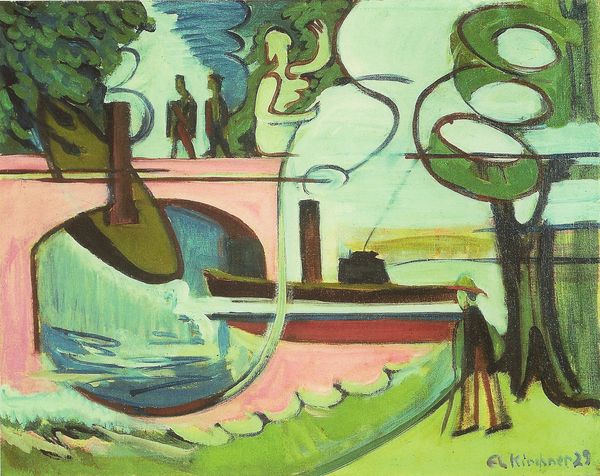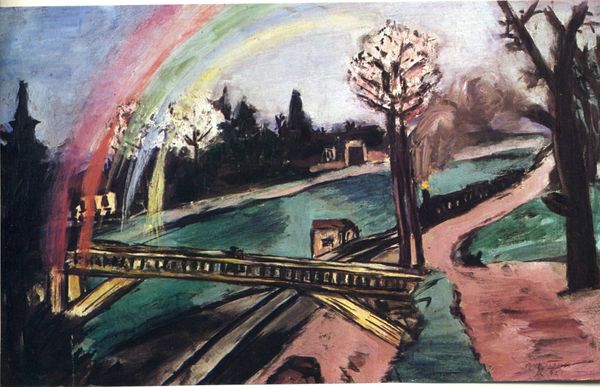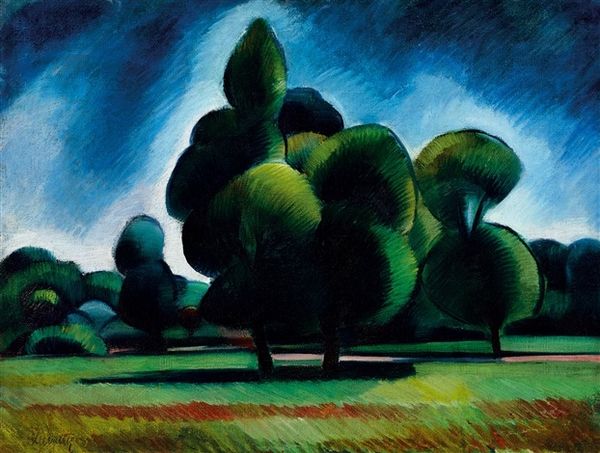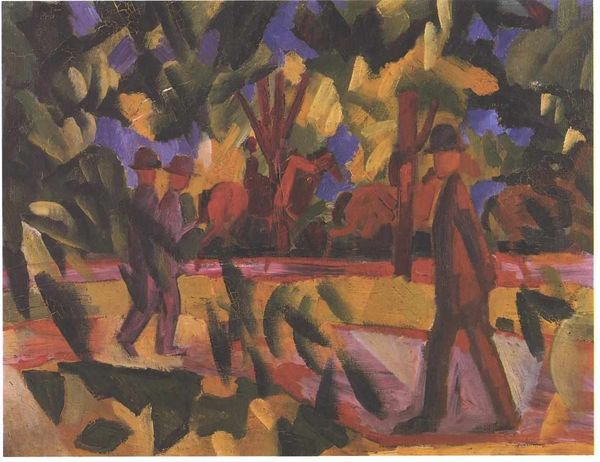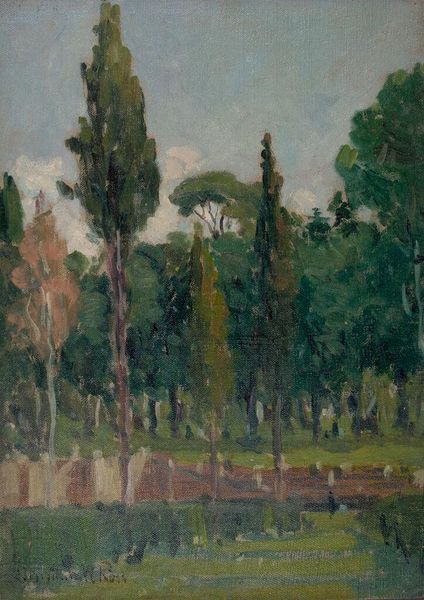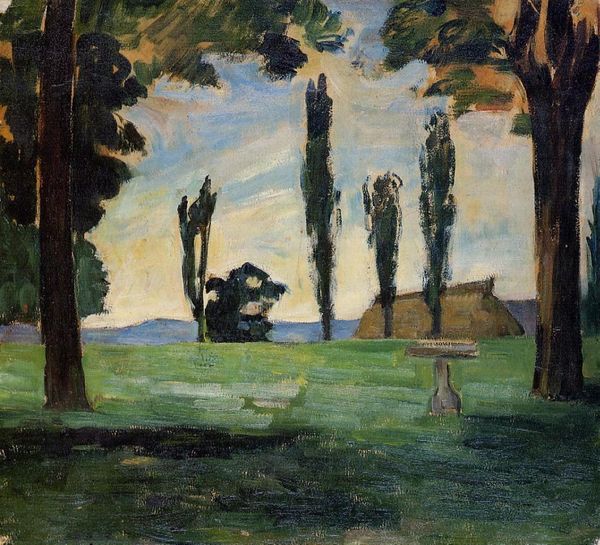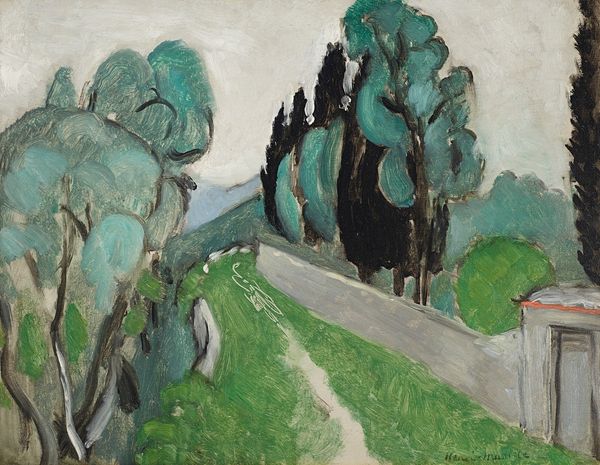
painting, oil-paint
#
painting
#
oil-paint
#
landscape
#
figuration
#
oil painting
#
expressionism
#
cityscape
#
realism
Copyright: Public domain
Max Beckmann’s “Seascape with Poplars” appears to have been rendered in oil paint, applied in a deliberately flattened manner. This stylistic choice is key to understanding the image. Although Beckmann engaged a traditional artistic medium, the handling of paint defies its inherent qualities. Usually, oil paint allows for blending and the creation of depth, but here, it’s used to flatten forms and create a sense of artifice. The material almost argues with itself: this is paint, but it seems determined not to resemble reality. The social context is also relevant. Beckmann painted this in 1934, as the Nazi regime was solidifying its power in Germany. His style of painting was later condemned as “degenerate.” In that light, we can see that “Seascape with Poplars” is not just a landscape, but a statement. The landscape is eerie, strangely lifeless. The figures fishing are alienated from one another. In short, it is a coded response to the times. It reminds us that materials, making, and context are all vital to understanding any work of art.
Comments
No comments
Be the first to comment and join the conversation on the ultimate creative platform.



